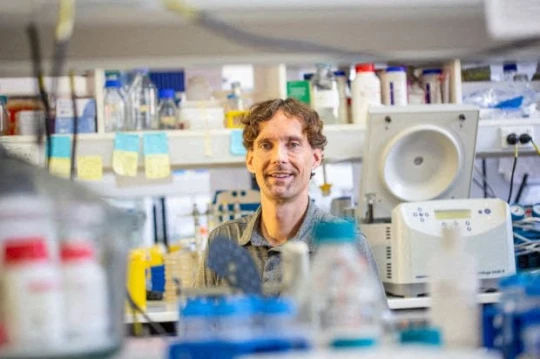Concrete slabs minus the styrofoam
- World Half Full

- Jan 30, 2023
- 3 min read
Updated: Jan 7, 2024
TECHNOLOGY/ENVIRONMENT

An innovative new product could change Australian building construction — if the challenges of bringing it to market can be overcome. That’s the view of Jim Prior who for years has been searching for a sustainable alternative to polystyrene waffle pods in slab foundations before he came across a black box called Biax. “A lot of those [other] solutions have typically missed the brief on either buildability, engineering compliance, Australian-standard compliance, cost, usability on site or even environmental,” he says. “This product ticks all those boxes.”
Prior, now general manager of Biax Foundations and Chief Operating Officer of Holloway Group, is calling it the next generation of waffle slab, “a highly sustainable, structurally sound alternative to the current solution”. He says Biax is stronger, stiffer and easier to install than the polystyrene used in almost 80% of Australian house foundations. It’s made from recycled plastic and takes up about one-seventh of the space of styrofoam, significantly reducing transport costs.
Biax was invented by Italian structural engineer Fabio Parodi, initially for commercial applications. Prior brought it to Australia and has spent a couple of years on further research and development to get it ready for the local market.
What appears at first glance to be a simple black box hides a host of design features: the pods have tapered sides so they stack, which also changes the shape of the concrete ribs from rectangular to slightly triangular. “That aids in the stiffness of the slab in terms of structural performance,” he says.
Grip nodules on the top of the pods stop builders slipping in wet weather or frost. A cross on top and a cone in the centre make the pods easier to work with on site. The pods have a 50mm rim at the base with holes at the corners so they can be joined with a connector.
“The bottom flange helps get our spacing accurate, which is part of the ability for us to be very accurate with our materials, such as concrete volume,” Prior says. “Whereas foam pods can drift apart and move under construction . . . these get locked together. [It’s] all very deliberate in terms of design.”
While these pods are more expensive than polystyrene, Prior says the cost is comparable when considering the system as a whole. That’s because Biax is quicker to install, easier to transport and uses less concrete and lower grades of steel reinforcement. The extra engineering is key to making the product cost-effective.
Biax could help the building industry eliminate 25,000 tonnes of polystyrene each year — a lot for a lightweight material.
Despite the benefits, Prior is realistic about the challenges of replacing an incumbent product. “A lot of builders don’t want to be the pioneers,” he says. “So we keep searching for those who are prepared to go out on a limb a little bit . . . and then hope others copy. And that’s starting to happen.”
Prior believes there will be a tipping point when builders get on board. “There will be a point soon, I think, when people will switch over just by virtue of the number of others using it,” he says. “We’ve seen that happen with many other building products, including the incumbent waffle pod. When that came out 20 to 30 years ago, it took ages for enough people to be using it and for the rest of the industry to go, ‘Right, we’re in.’”
Intrax residential engineer Tomi Oladele says Intrax is now recommending Biax to residential building clients. He argues the use of recycled materials rather than polystyrene is a big selling point and it’s simple to apply, particularly for highly reactive sites. It can also be customised and “designed and specced up”, he adds.
ABOVE Jim Prior
PHOTO Lyndon Marceau



Comments